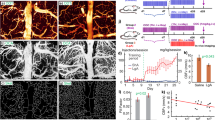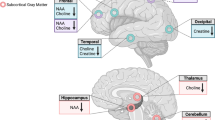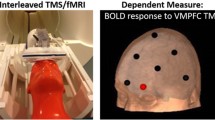Abstract
The patient who presents for evaluation and/or subsequent treatment of a neurological or psychiatric complaint accompanied by a positive history of substance abuse has generally received only modest attention in the clinical practice literature. Significantly more clinical attention has focused on the neurobehavioral sequelae of more pronounced brain insults, despite the rapid emergence of literature detailing psychopharmacologic-induced changes in brain-behavior functioning. This article describes recent clinical research findings related to the neuropsychology of cocaine use and associated issues of neurobiology and psychopharmacology. A description of strategies that have proven effective for assessing this population will be discussed. An emphasis on neurocognitive impairment that may precede as well as occur consequent to cocaine use are also examined. The literature reviewed here generally supports the conclusion that subgroups of cocaine abusing patients may demonstrate sustained brain perfusion anomalies and persistent neurocognitive deficits.
Similar content being viewed by others
References
Abelson, H. I., and Miller, J. D. (1985). A decade of trends in cocaine use in the household population.NIDA Research Monographs 61: 35–49.
Ardila, A., Rosselli, M., and Strumwasser, S. (1991). Neuropsychological deficits in chronic cocaine abusers.International Journal of Neuroscience 57: 73–79.
Caplan, L. R., Hier, D. B., and Banks, G. (1982). Current concepts of cerebrovascular disease-stroke, stroke and drug abuse.Stroke, 13: 869–872.
Catravas, J. D., & Waters, I. W. (1981). Acute cocaine intoxication in the conscious dog: Studies on the mechanisms of lethality.Journal Pharmacology and Experimental Therapeutics 17: 350–356.
Cregler, L. L., and Mark, H. (1986). Medical complications of cocaine abuse.New England Journal of Medicine 315: 1495–1500.
Department of Health and Human Services. (1994). HHS releases 1993 houschold drug survey.HHS News, July 20.
Engstrand, B. C., Daras, M., Tuchman, A. J., Koppel, B. S., Schallop, C., and Jindal, S. P. (1989). Cocaine-related ischemic strokes (abstract).Neurology, 39 (Suppl 1): 186.
Galloway, M. P. (1988). Neurochemical interactions of cocaine with dopaminergic systems.Trends in Pharmacological Science 9: 452–454.
Green, R., Kelly, K. M., Gabrielson, T., Levine, S. R., & Vandersant, C. (1990). Multiple intracerebral hemorrhages after smoking “crack” cocaine.Stroke 25: 957–962.
Hartman, D. E. (1995).Neuropsychological Toxicology (2nd ed.), Pergamon Press, New York.
Holman, B. L., Carvalho, P. A., Mendelson, et al. (1991). Brain perfusion is abnormal in cocaine-dependent polydrug users: A study using technetium-99m-HMPAO and ASPECT.Journal of Nuclear Medicine 32, 1206–1210.
Klonoff, D. C., Andres, B. T., and Obana, W. G. (1989). Stroke associated with cocaine use.Archives of Neurology 46: 989–993.
Krendel, D. A., Ditter, S. M., Frankel, M. R., and Ross, W. K. (1990). Biopsy-proven cerebral vasculitis associated with cocaine abuse.Neurology 40: 1092–1094.
Lehman, L. B. (1987). Intracerebral hemorrhage after intranasal cocaine use.Hospital Physician 7: 69–70.
Levine, S. R., Brust, J. C. M., Futtrell, N., et al. (1990). Cerebrovascular complications of the use of the “crack” form of alkaloidal cocaine.New England Journal of Medicine 323: 1699–1704.
Levine, S. L., and Welch, K. M. A. (1988). Cocaine and stroke.Stroke 19: 799–783.
Lezak, M. D. (1995). Neuropsychological Assessment (3rd ed.) Oxford University Press, New York.
Lichtenfeld, P. J., Rubin, D. B., and Feldman, R. S. (1984). Subarachnoid hemorrhage precipitated by cocaine snorting.Archives of Neurology 41: 223–224.
Lillie-Blanton, M., Anthony, J. C., and Schuster, C. R. (1993). Probing the meaning of racial/ethnic group comparisons in crack cocaine smoking.Journal of the American Medical Association 269: 993–997.
Manscherck, T. C., Margert, L., Schneyer, C., Weistein, C., Laughery, J., Rosenthal, J., Celada, T., and Berner, J. (1990). Freebase cocaine and memory.Comprehensive Psychiatry 31: 369–375.
Meek, P. S., Clark, H. W., and Solana, V. (1989). Neurocognitive impairment: The unrecognized component of dual diagnosis in substance abuse treatment.Journal of Psychoactive Drugs 21: 153–160.
Miller, B. L., Lesser, I. M., Boone, K., Hill, E., Mehringer, C. M., and Wong, K. (1991). Brain lesions and cognitive function in late-life psychosis.British Journal of Psychiatry 158: 176–82.
Mittenberg, W., and Motta, S. (1993). Effects of chronic cocaine abuse on memory and learning.Archives of Clinical Neuropsychology 8: 477–483.
Mody, C. K., Miller, B. L., McIntyre, H. B., et al. (1988). Neurological complications of cocaine abuse.Neurology 38: 1189–1193.
Moore, P. M., and Peterson, P. L. (1989). Nonhemorrhagic cerebrovascular complications of cocaine abuse.Neurology 39 (suppl. 1): 302.
Nalls, G., Disher, A., Dariabagi, J., Zant, Z., and Eisenman, J. (1989). Subcortical cerebral hemorrhages associated with cocaine abuse: CT and MR findings.Journal of Computer Assisted Tomography 13: 1–5.
Notel, K. B., and Gelman, B. B. (1989). Intracerebral hemorrhage associated with cocaine abuse.Archives of Pathology and Laboratory Medicine 113: 812–813.
Pitts, D. K., and Marwah, J. (1989). Autonomic effects of cocaine.Canadian Journal of Physiological Pharmacology 67: 1167–1176.
Post, R. M. (1975). Cocaine psychoses: A continuum model.American Journal of Psychiatry 132: 225–231.
Ranseen, J. D., Hays, L. R., Dickson, L. R. and Gilmore, R. (1990).Neuropsychological testing of cocaine addicts: A pilot study. National Academy of Neuropsychology, Reno, NV.
Rogers, J. N., Henry, T. E., Jones, A. M., Froede, R. C., and Byers, J. M., III (1986). Cocainerelated deaths in Pima County, AZ, 1982–1984.Journal of Forensic Sciences 31: 1404–1408.
Sbordone, R. J. (1991).Neuropsychology for the Attorney, Paul M. Deutsch Press, Orlando, FL.
Schwartz, K. A., and Cohen, J. A. (1984). Subarachnoid hemorrhage precipitated by cocaine snorting.Archives of Neurology 41: 705.
Strickland, T. L., Mena, I., Villanueva-Meyer, J., Miller, B. L., Cummings, J., Mehringer, C. M., Satz, P. and Myers, H. (1993). Cerebral perfusion and neuropsychological consequences of chronic cocaine use.Journal of Neuropsychiatry and Clinical Neuroscience 5: 419–427.
Volkow, N. D., Mullani, N., Gould, K. L., Adler, S. and Krajewski, K. (1988). Cerebral blood flow in chronic cocaine users: A study with positron emission tomography.British Journal of Psychiatry 152: 641–648.
Volkow, N. D., Wolf, A. P., Dewey, S., et al. (1989). Measurements of postsynaptic dopamine receptors in cocaine abuser.Journal of Nuclear Medicine 30: 730.
Washton, A. M., and Gold, M. S. (1986). Recent trends in cocaine abuse: A view from the national hotline “800-COCAINE.”Advances in Alcohol and Substance Abuse 6: 31–47.
Wojak, J. C., and Flamm, E. S. (1987). Intracranial hemorrhage and cocaine abuse.Stroke 18: 712–715.
Author information
Authors and Affiliations
Rights and permissions
About this article
Cite this article
Strickland, T.L., Stein, R. Cocaine-induced cerebrovascular impairment: Challenges to neuropsychological assessment. Neuropsychol Rev 5, 69–79 (1995). https://doi.org/10.1007/BF02214930
Issue Date:
DOI: https://doi.org/10.1007/BF02214930




